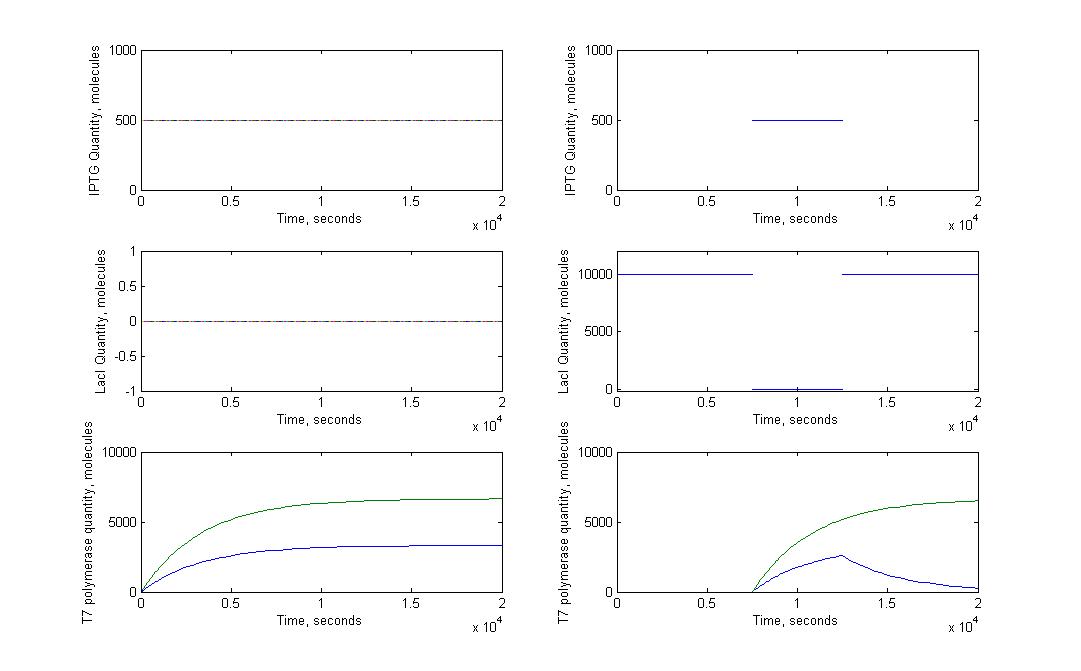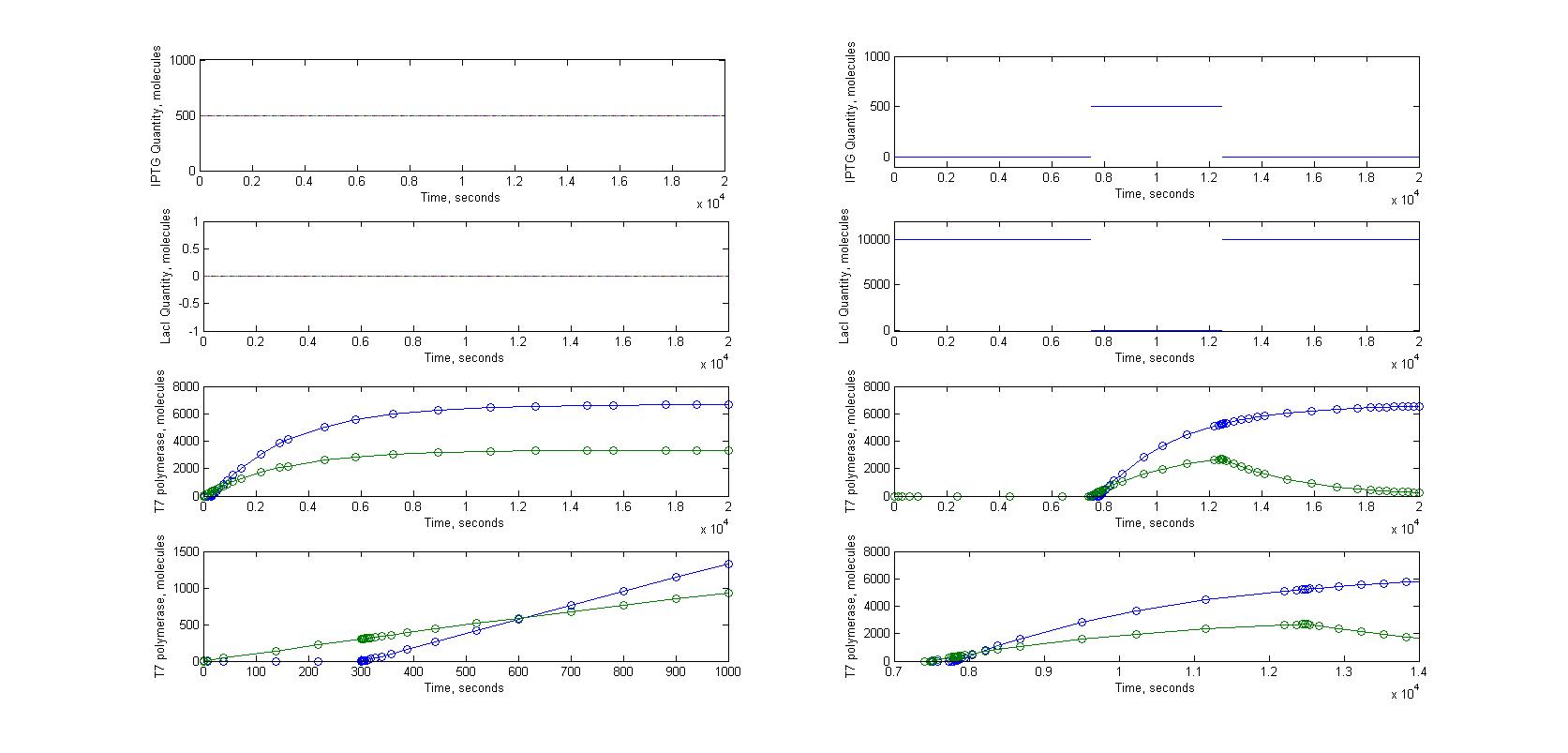Team:Paris Bettencourt/Modeling/T7 diffusion
From 2011.igem.org
(→Model for T7 diffusion) |
(→Parameters) |
||
| Line 19: | Line 19: | ||
*''T7''' represents the signaling T7 RNA polymerase. | *''T7''' represents the signaling T7 RNA polymerase. | ||
*''T7'''' represents is the auto-amplifying molecule. | *''T7'''' represents is the auto-amplifying molecule. | ||
| - | <html><img src='https://static.igem.org/mediawiki/2011/ | + | <html><img src='https://static.igem.org/mediawiki/2011/5/54/Emitting_construct_schema.png' style='width:100%;'></html> |
| + | <html><img src='https://static.igem.org/mediawiki/2011/5/54/Emitting_construct_schema.png' style='width:100%; display:block;'></html> | ||
== Model == | == Model == | ||
Revision as of 13:24, 5 August 2011

Contents |
Model for T7 diffusion
Design
The T7 diffusion design is our first original construct. In this design, the T7 RNA polymerase acts both as the signal transmited and as the amplifier (auto-amplification). T7 RNA polymerase is produced in the emitter cell, then diffuses through the nanotubes and arrives in the receiver cell. In this cell, the T7 RNA polymerase activates on a pT7 promoter. Behind this promoter, we put a gene coding for the same T7 RNA polymerase (amplifier) and for GFP (reporter).
This construction was put in two different settings. One is what we just described, where the emitting gene network is in one cell and the receiving gene network is in another. In the other construction, everything is in one cell. We use the second construct as a control to really see the impact of the cell-to-cell communication on the behaviour of the cells.
We ran our models for those two configurations. We used a steady flow of signaling molecules in the receiver cell for the "one emitting cell - one receiving cell" construction. You can find our justifications about this assumption here.
Parameters
This design relies on the T7 RNA polymerase (which is noted T7) both as the signaling molecule going through the nanotubes and as the auto-amplification system when it acts on the pT7 promoter. In our equations however, we chose to distinguish these functions.
- T7' represents the signaling T7 RNA polymerase.
- T7'' represents is the auto-amplifying molecule.


Model
We use the LacI as a repressor for the emitter gene construct. LacI repression can be cancelled by IPTG. This way we can induce production of RFP and T7' by puttig IPTG on the cells.

 Inactivated LacI can not repress the pLAC promoter anymore.
Inactivated LacI can not repress the pLAC promoter anymore.
The emitter gene construct is modeled by the following equations:

The reporter for the emitter gene construct (RFP) is modeled by the following equations:

The receiver and amplification gene construct is modeled by the following equations:

 "
"



